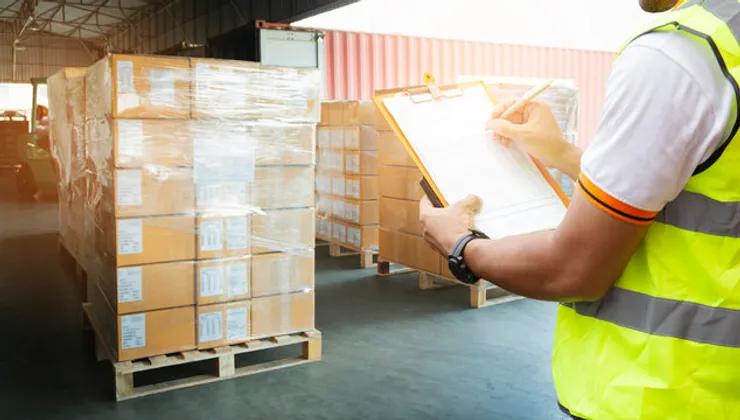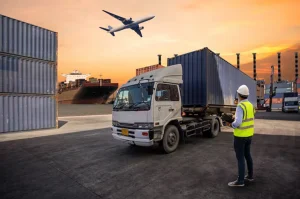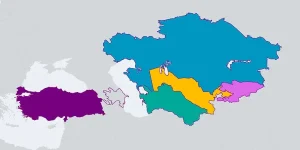Central Asia, with its strategic location bridging Europe and Asia, presents a compelling proposition for international trade. In recent years, the region has emerged as a pivotal player in the global logistics landscape, offering vast opportunities for exporting high-volume goods through efficient freight and cargo operations.
Central Asia boasts a rich tapestry of natural resources, including oil, gas, minerals, and agricultural products. Countries such as Kazakhstan, Uzbekistan, Turkmenistan, Kyrgyzstan, and Tajikistan possess abundant reserves and produce significant quantities of these commodities. Leveraging these resources, Central Asia has become a key contributor to the global supply chain.
Overcoming Challenges: Exporting High-Volume Goods from Central Asia
Exporting high-volume goods from Central Asia presents a unique set of challenges rooted in the region’s geography, infrastructure, and regulatory environment. However, innovative solutions and strategic initiatives can help exporters overcome these obstacles and harness the region’s vast potential for international trade.
Challenges
-
Logistical Constraints: Central Asia’s landlocked geography presents logistical challenges, as goods must traverse long distances to reach international markets. Limited transportation infrastructure and inefficient border crossings contribute to delays and increased transportation costs.
-
Customs and Regulatory Hurdles: Diverse customs procedures and regulatory frameworks across Central Asian countries complicate the export process. Complex paperwork, bureaucratic inefficiencies, and inconsistent enforcement of regulations hinder the smooth flow of goods across borders.
-
Infrastructure Deficiencies: Inadequate transportation infrastructure, including roads, railways, and ports, constrains the efficient movement of high-volume goods. Poor connectivity between production centers and export hubs exacerbates logistical challenges and increases transit times.
-
Market Access Barriers: Accessing international markets requires navigating trade barriers, tariffs, and non-tariff barriers imposed by importing countries. Limited trade agreements and market diversification efforts restrict export opportunities for Central Asian goods.
-
Supply Chain Vulnerabilities: Central Asia’s susceptibility to geopolitical tensions, natural disasters, and economic uncertainties poses risks to supply chain continuity. Dependence on single transport routes and inadequate risk management strategies leave exporters vulnerable to disruptions.
Solutions
-
Harmonization of Customs Procedures: Standardizing customs procedures and streamlining border clearance processes enhance efficiency and reduce transit times. Regional cooperation agreements, such as the Central Asia Regional Economic Cooperation (CAREC) program, promote harmonization of trade facilitation measures.
-
Adoption of Digital Technologies: Leveraging digital platforms and electronic documentation systems streamlines customs clearance and improves supply chain visibility. Electronic data interchange (EDI), blockchain technology, and automated clearance systems expedite trade processes and reduce paperwork burdens.
-
Risk Mitigation Strategies: Implementing robust risk management strategies, such as supply chain diversification, contingency planning, and insurance coverage, mitigates the impact of geopolitical and economic risks. Collaborating with reliable logistics partners and monitoring geopolitical developments enhances resilience to supply chain disruptions.
How to choose the transportation mode?
Choosing the transportation mode for exporting high-volume goods from Central Asia involves considering various factors such as the nature of the goods, destination, transit time requirements, cost considerations, and infrastructure availability. Here’s a guide to help you make an informed decision:
1. Nature of Goods:
-
Perishability: If the goods are perishable or time-sensitive, air freight may be the preferred mode due to its speed.
-
Bulkiness: For bulky goods such as minerals or machinery, sea or rail transport may be more suitable to accommodate large volumes efficiently.
-
Value: High-value goods may warrant the use of air freight for security and insurance purposes, while lower-value goods may be transported economically via sea or rail.
2. Destination:
-
Distance: Consider the distance to the destination market and the accessibility of transportation modes. Air freight is suitable for long-distance shipments, while rail or road transport may be more practical for neighboring countries.
-
Infrastructure: Evaluate the infrastructure and connectivity of transportation modes at both the origin and destination. Choose modes that offer seamless connectivity and reliable transit times.
3. Transit Time Requirements:
-
Urgency: Determine the urgency of delivery. Air freight provides the fastest transit times, making it ideal for time-sensitive shipments. Sea and rail transport typically have longer transit times but may offer cost savings for non-urgent cargo.
-
Lead Time: Plan ahead and consider lead times for each transportation mode. Air freight requires shorter lead times for booking compared to sea or rail transport, which may require longer lead times for scheduling.
4. Cost Considerations:
-
Freight Rates: Compare freight rates for different transportation modes, including transportation fees, handling charges, customs duties, and insurance costs. Choose the mode that offers the best balance of cost and service level.
By evaluating the nature of goods, destination, transit time requirements, cost considerations, and infrastructure availability, exporters can make informed decisions and effectively manage their logistics operations to achieve success in global markets. Collaboration with experienced logistics partners and freight forwarders can also provide valuable expertise and assistance in navigating transportation challenges and optimizing supply chain efficiency.
Toptrans – Your Reliable Partner in Exporting High-Volume Goods from Central Asia
At Toptrans, we pride ourselves on our 8+ years of industry expertise in international cargo transportation. Our services encompass land, sea, air, and rail transportation, along with customs and brokerage services. We understand the importance of timely and hassle-free delivery, which is why we focus on providing high-quality solutions at competitive prices. When it comes to exporting high-volume goods from Central Asia, Toptrans is your trusted partner every step of the way.
Benefits of Choosing Toptrans for Central Asia Export
When you choose Toptrans for exporting high-volume goods from Central Asia, you gain access to a host of benefits, including:
-
Reliable and fast shipping services
-
Comprehensive range of transportation options
-
Competitive pricing and transparent fee structure
We strive to exceed your expectations at every turn, providing value-added services that enhance your bottom line.
Toptrans specializes in handling various cargo types, including dangerous and military shipments. Our experienced team ensures compliance with safety regulations and implements stringent security measures to safeguard your cargo throughout the transportation process.
Customs and Brokerage Services
Navigating complex customs regulations can be daunting for businesses. That’s where Toptrans comes in. Our customs and brokerage services streamline the process, ensuring smooth clearance for your shipments. With our expertise, you can avoid costly delays and minimize the risk of compliance issues.
Safety and Security Measures
At Toptrans, safety and security are our top priorities. We implement stringent measures to ensure the safety of your cargo throughout the transportation process. From secure packaging to GPS tracking, we leverage technology to provide peace of mind to our clients.
Diversification of Transport Options to Mitigate Risks
Diversification is key to mitigating risks in international trade. Toptrans offers a wide range of transport options, allowing you to choose the most suitable route for your cargo. Whether you’re shipping goods to European Union countries, Turkey, Central Asian States, Ukraine, or China, we have the expertise and infrastructure to get the job done.
Determining Service Fees
The final service fee for exporting high-volume goods from Central Asia is determined based on various factors, including:
-
Individual cargo characteristics
-
Chosen route
-
Type of transportation
-
Additional services are required.
At Toptrans, we believe in transparency and fairness when it comes to pricing. Our customized quotes take into account your specific needs and requirements, ensuring that you get the best value for your money.
Exporting high-volume goods from Central Asia requires careful planning and execution. With Toptrans by your side, you can rest assured that your cargo is in good hands. From reliable transportation services to expert customs clearance, we have the expertise and infrastructure to meet your needs. Contact our customer service team today for fast quotes and personalized assistance.








